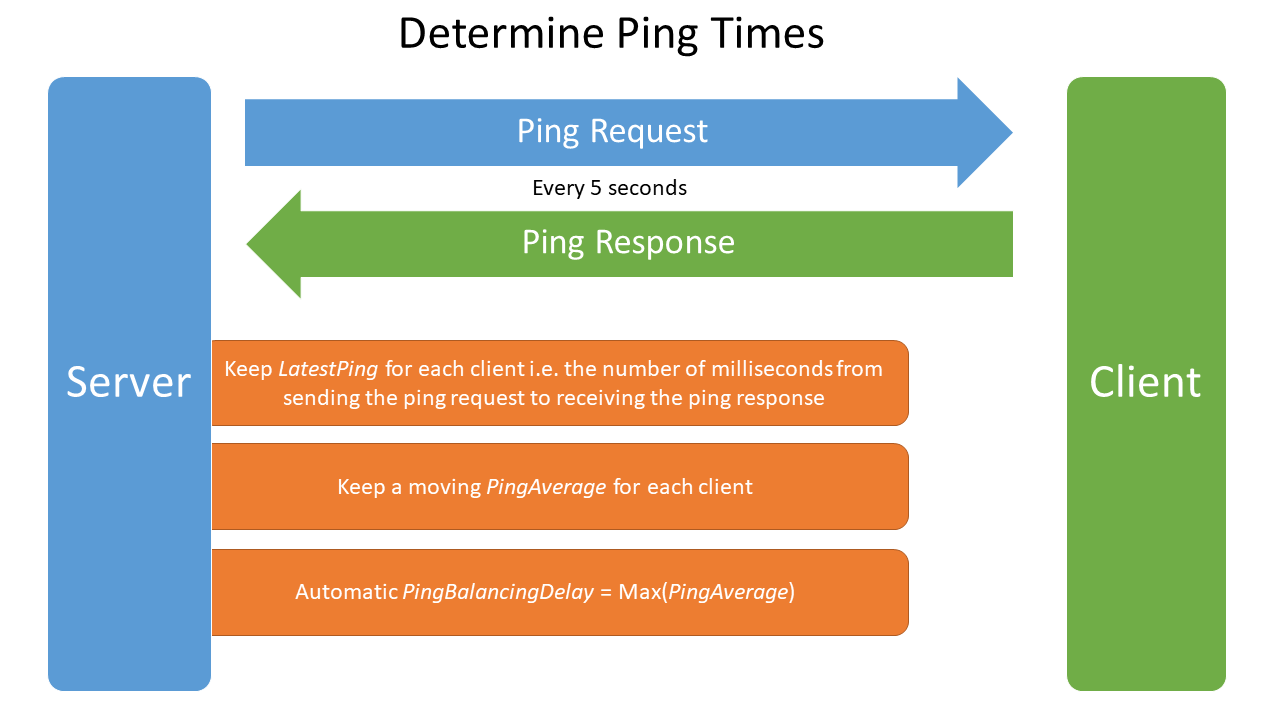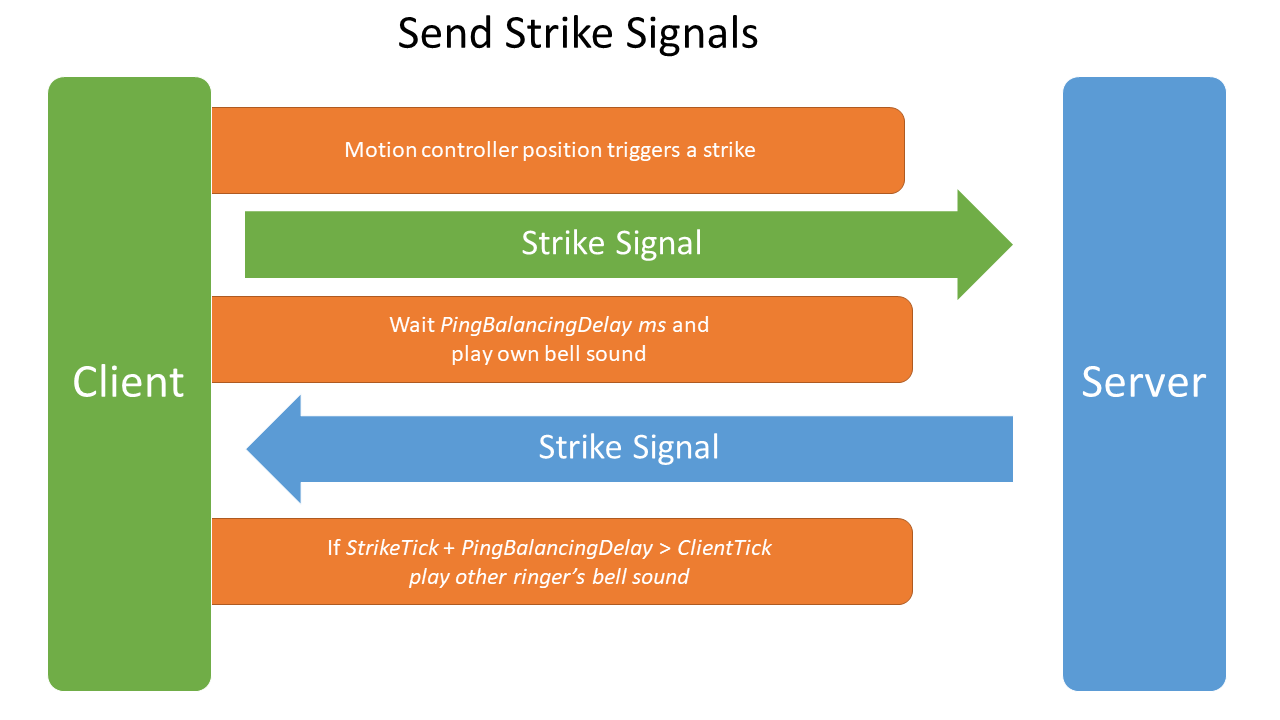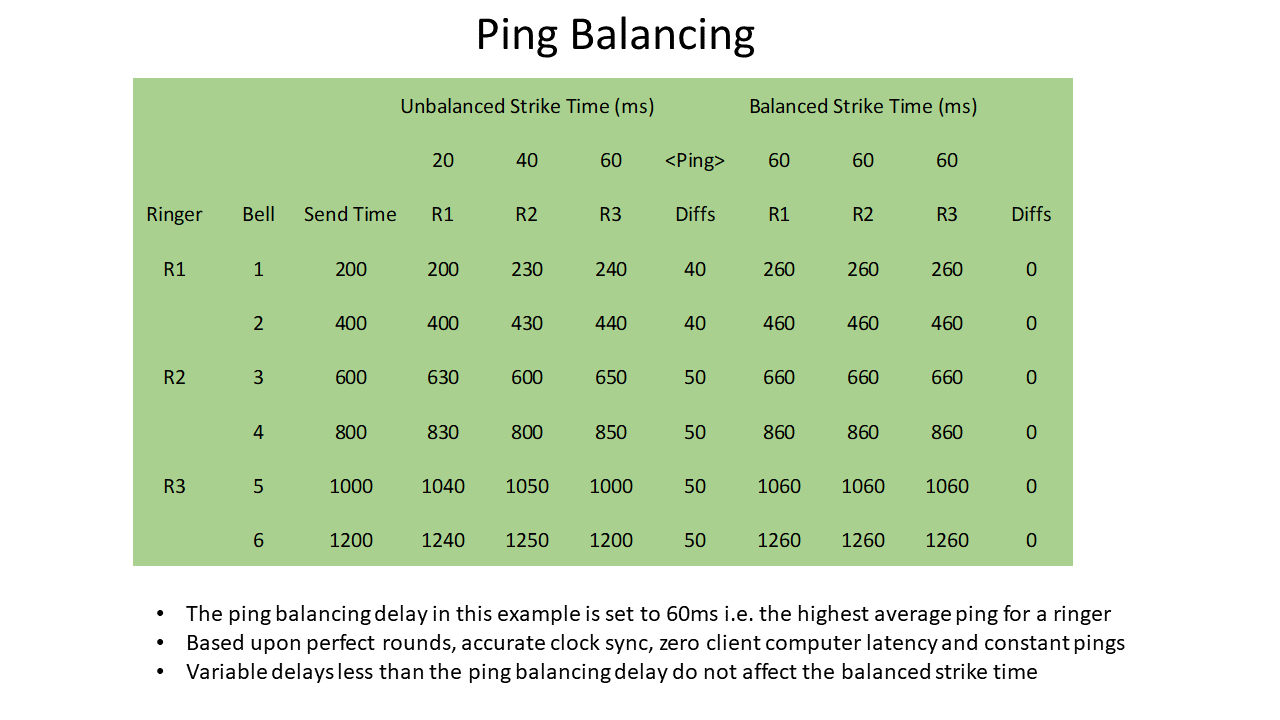Technical Information
The following sections describe some technical background to some aspects of how Handbell Stadium works.
Ping Balancing
One of the issues we experienced when testing Handbell Stadium was that we found it difficult to get a good rhythm, even with experienced handbell ringers, and as a result we tended to ring much slower to ensure separation of the bells. In normal ringing, we very quickly become accustomed to larger bells having a slower swing and naturally compensate to get a good rhythm. The problem with ringing over the internet is therefore not so much that there is a delay, because we can adjust to that, but it is the variability of delay that is the issue because that is impossible to compensate for.
To help address this issue, a feature called "ping balancing" has been developed. The aim of this is to take the delays in transmission to each ringer and make them all the same. This is achieved by first synchronising the clocks on each ringer's computer to the server (this is a simplification as it is a timer in the Handbell Stadium program that is synchronised - the computer's clock is not adjusted). Then the exact time of each strike is transmitted via the server to all the other ringers' computers. The recipient computer will only play that strike when its own clock has reached the strike time plus the ping balancing delay. The length of the ping balancing delay is automatically and continuously calculated by Handbell Stadium to give good results based upon the ping times of the participants.
While this still means that ringing on the internet will be slower than normal, the improved consistency means that the ringers can establish a better rhythm. This allows greater anticipation to ring the bells closer together resulting in faster ringing.
The diagrams below explain the process in more detail.



